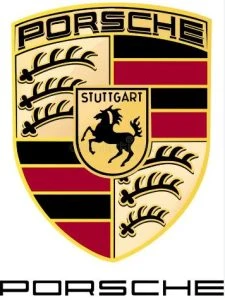German Cars
Porsche’s six-stroke engine

Who loves a good internal combustion engine (ICE)? Confession time would have me say that I still love the special characteristics of an ICE and the awesome soundtracks that they can make – none being more special than a sonorous and legendary V8 or even a fully vocal high-pitched straight six.
Now there is news in the hood that Porsche has patented some new technology whereby the introduction of a six-stroke cycle for an ICE of theirs will be made. The common four-stroke cycle that is already used by almost every auto manufacturer, including Porsche, has four strokes: intake, compression, ignition, and exhaust. Porsche states that the six-stroke cycle will make considerable gains in power output while also lowering its levels of emissions. This is great news for ICE fans.
How does it work and what’s the difference? As the numbers suggest, the conventional four-stroke cycle makes a power stroke one in every four times that the piston moves on its vertical axis. Thus, in a conventional four-stroke engine, each piston helps to drive the car about 25% of the time. Porsche’s new six-stroke engine will provide a power stroke twice in its six-stroke cycle – that’s two power strokes out of every six that the piston moves on its vertical axis (or one in three). This means that each piston is helping to power/drive the vehicle about 33% of the time it’s moving. The six-stroke cycle works as follows: intake fuel and air, compress the fuel and air mix, ignition (power), intake more fuel and air, ignition (power), and exhaust.
By allowing the piston to have a variation in its travel length inside its chamber via clever internal gearing and a special vent design, the six-stroke engine can produce more power strokes within its cycle. For the first three strokes, the piston works like a normal four-stroke. Then, on the fourth stroke, the special gearing allows the piston to drop lower in its chamber, presenting some more scavenging ports that allow more fuel and fresh air to enter the cylinder while the exhaust gases escape out the exhaust ports. The fifth stroke ignites the fresh fuel mix, and then the sixth cycle gets rid of all burnt/spent gases.
Who wouldn’t want a great sounding faster and more efficient new Porsche sports car? However, this is not all that the clever team at Porsche have been up to. Porsche has already worked towards creating a fuel that is considered to be a carbon-neutral synthetic fuel made from carbon dioxide (CO2) that has been captured from the atmosphere. That’s right, it is essentially using or recycling atmospheric carbon as fuel for their ICE vehicle.
While still leading the charge for ICE fans, Porsche has not abandoned EVs. It is also worth noting that Porsche is also going in all guns blazing with EV technology as well. Most new models of Porsche have an EV in their line-up already, and the Taycan is a pure EV.
All the same, I’m fascinated by this new six-stroke technology and am looking forward to seeing it in whatever new offerings Porsche decides to serve up.

Fahrvergnügen

Given that the car was more or less invented in Germany, and given that German is a language in which you can create compound words with subtle and complex meanings, it’s not surprising that there’s a German word that all true drivers can relate to, even if we’ve never come across the word before or if we don’t speak German. This word is “fahrvernügen”, which means something like “the pleasure of driving” or “the joy of travelling”.
OK, to be fair, the word isn’t a traditional one, and it was probably coined in the 1990s as part of a Volkswagen ad campaign that ran in the US. However, that was around 30 years ago (feeling old now?) and just because a word was made up for advertising purposes doesn’t mean that it’s not legitimately part of the vocabulary, especially when it’s a useful term that describes an everyday activity or need. By way of comparison, fahrvergnügen is older than the English verb “to google” and nobody will challenge the idea that “google” is a legitimate verb. As far as I can work out, fahrvergnügen is an official German word.
And no wonder it’s become official, no matter how it entered the language. I’m kind of surprised that it wasn’t around before the 1990s, as it’s certainly a thing that most of us can relate to, no matter what language we speak. For some people, it’s the thrill of pushing down the throttle and feeling the acceleration and the blur of speed. For some, it’s the sideways G-forces as you put something with exquisite handling around a particularly curvy piece of road. For others, it’s the feeling of being in control. For others, it’s the combination of the car’s sound and personality. And for others, it’s just the satisfaction and pleasure of getting out of one’s usual surroundings and going somewhere else.
German has a few other words with no English equivalent that have their uses in the world of cars, driving and automotive topics that most drivers can relate to. Here’s a selection:
- Fernweh – a longing for far-off places
- Kabelsalat (literally “cable salad”) or a mess of cables, which is what you’ll be greeted with when trying to check the fuses or to install a new speaker in any modern car.
- Schilderwald (literally: “shield forest”): a street so full of signs that it’s more likely to make you lost and confused than otherwise.
- Schlimmbesserung: A tweak or update that was supposed to improve things but actually makes things worse. The related verb is “Verschlimmbessern”. I think we can all think of examples, but I’m not stupid enough to name them, even for the sake of schadenfreude (the pleasure of seeing other’s misfortune).
- Autobahn: I think we don’t have this one because we don’t have autobahns; we just have motorways that have set speed limits.
Just for the fun of it, other languages also have some words with no English equivalent that most drivers can relate to, like the following:
- Akihi (Hawaiian): to get instructions or directions, then forget them completely when you try to apply them.
- Gilchi (Korean): Someone who has a terrible sense of direction and gets lost all too easily.
- Resfeber (Swedish): that feeling of nerves, excitement and anticipation before a journey begins.
And what about that other German phrase we see frequently in the automotive world, namely Audi’s slogan of “Vorsprung durch Technik”? Well, this means something like “advancement/progress through technology” or “the technical edge” or “technological advantage”. In fact, Audi tried to get this phrase trademarked, but this led to a long and complicated court case – which is a good story for another time, to quote the Star Wars sequels.
Anyway, even if you never came across the original fahrvergnügen ad campaign, I’m sure that you’ve experienced the concept all the same. Tell us in the comments what makes up fahrvergnügen for you.
AMG One Nürburgring Record

Doesn’t this car look immense! The AMG One has become the fastest road-legal production car to run around Germany’s famous track, the Nürburgring. The track is just shy of 21 kilometres long and is full of challenging corners with some scintillatingly quick straights thrown in for good measure.
The AMG One’s two-seat cockpit is accessed via doors that open up on the diagonal – forwards and upwards. The car’s seats are moulded into the structure of the car to save weight and are made of a magma grey nappa leather and black Dinamica microfibre. The backrest can be adjusted to two different angles. Despite the minimalist design, the AMG One comes with features like climate control, electric windows, an infotainment system, and a rear-view camera.
It is quite a car! The exterior looks stunning, with the exterior having an airbrush finish to it that features hundreds of little three-pointed stars – like on the current Mercedes Formula One cars. The car’s front wheels boast 19-inch rims, and the rear rims are 20-inch. The push-rod spring struts are aluminium and can be adapted to three settings: Comfort, Sport and Sport Plus. Anti-lock brakes, a three-stage stability control system, and a nine-stage traction control system all work in unison to keep the AMG One firmly in control and well-planted. Shod with the best Michelin Pilot Sport Cup 2R M01 tyres, there is a load of grip to be had.
The car’s ride height can be hydraulically dropped 37 mm at the front and 30 mm at the rear. A Drag Reduction System has been implemented into the design for reducing downforce by around 20%. The drag reduction works by closing the louvres over the front wheels and retracting the rear wing so that the car can accelerate to higher speeds more rapidly. This feature, of course, is deactivated automatically when the driver hits the carbon ceramic brakes or takes on a corner.
Designed with a carbon-fibre monocoque structure, the platform helps to reduce the weight and enhance the car’s stiffness. AMG has managed to keep the kerb weight of the AMG One down to below 1700 kg. A lot of special work has been done in the aerodynamics department. That’s why the AMG One has an active front splitter, a massive deployable rear wing, louvres that are visible over the top of each of the front wheels, and even a distinctive fin that runs down the backbone of the car. All of these important components are there to enhance the flow of the air over and around the car.
The AMG One has four electric drive motors, and Mercedes say that the car has an all-electric range of 18.1 km. Two of the electric motors (located at the front) also work a torque vectoring system across the front axle. When the ICE engine is running at the same time as the electric motors, the car is in full AWD mode. The ICE motor is a 1.6-litre turbocharged unit, derived from the 2015 Mercedes-AMG Petronas Formula One Team’s car. This engine runs alongside the MGU-K hybrid system, giving the AMG One a combined power output of 782 kW.
The AMG One’s official performance stats include a 0-100 km/h time of 2.9 seconds, a 0-200 km/h sprint time of just 7.0 seconds, and a top speed of 352 km/h.

Maro Engel was the car’s driver for the record lap time, and he was able to run the AMG One around the Nürburgring in a record time of 6 min: 35.183 seconds. This time is eight seconds faster than the previous record set last year by Lars Kern in a Porsche 911 GT2 RS MR. Maro mentioned that the track conditions weren’t ideal at the time the record was set, suggesting that the AMG One could definitely run the lap faster still with better track conditions.
Remember this BMW?
Remember the Batmobile? An absolute classic BMW that has been set in motoring history is the old BMW 3.0 CSL. Known as the Batmobile, the quick and very unique 3.0 CSL BMW Coupe was first manufactured around 1973. At that time, the car was raced in the European Touring Car Championship, which it won. In fact, the car was so good that it won the Championship for four years on the trot.

As a celebration, 50 years on from the release of the original Batmobile and as a 50 year celebration of their M division vehicles, BMW are making a very limited line of these brand new BMW 3.0 CSL Coupes that house the most powerful 6-cylinder engine BMW has ever produced for a road-legal vehicle. Only 50 of the cars will be made, making it an insanely rare vehicle on the road, while also ensuring that it won’t be purchased cheaply.

The new BMW 3.0 CSL comes with a six-speed manual gearbox, RWD, and 412 Nm of power. The engine has been based on the sweet 3.0-litre twin-turbo engine that is used in the current BMW M4 CSL but with a lift in power. The BMW M4 can run through the 0-100 km/h dash in a bit over four seconds, and the rare 3.0 CSL will likely better that.
The latest Batmobile, like the M4 CSL, comes with only the two front seats and no back seats. The interior inside the BMW 3.0 CSL Coupe is similar to the M4 CSL’s in structure and flow, yet there are plenty of special logos, detailing and design features to hark it back to the original. For instance, you’ll notice the logos on the headrests and some new horizontal stripes on the backrests match the looks of the old 3.0 CSL.
Out on the exterior is where you’ll find the design and bodywork really harking back to the original version, so the pair of round intakes on the sides of the bumper were inspired by the classic CSL’s design, so too were the vertical carbon fins that run down each side of the bonnet. And check out that chunky hindquarter where the rear wheel arches are beautifully flared and full, and sitting on top of the boot lid is a nice square spoiler to complete the stunning picture. The majority of the new car’s bodywork will have been constructed from carbon-fibre reinforced plastic with plenty of the parts having been made by hand.
A brand new BMW 3.0 CSL will be one of the rarest BMWs you can buy, and its also one of the most expensive. Pretty special though!